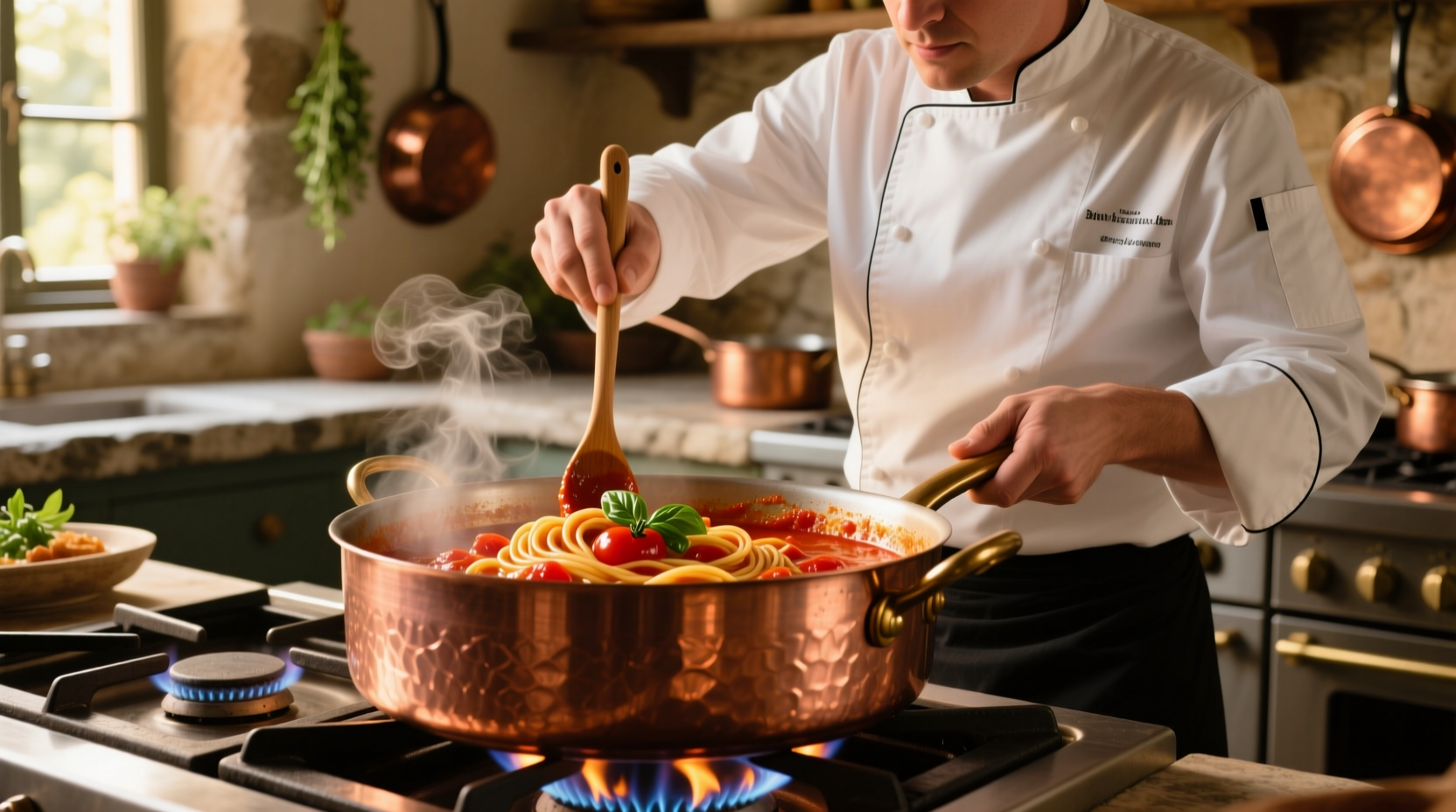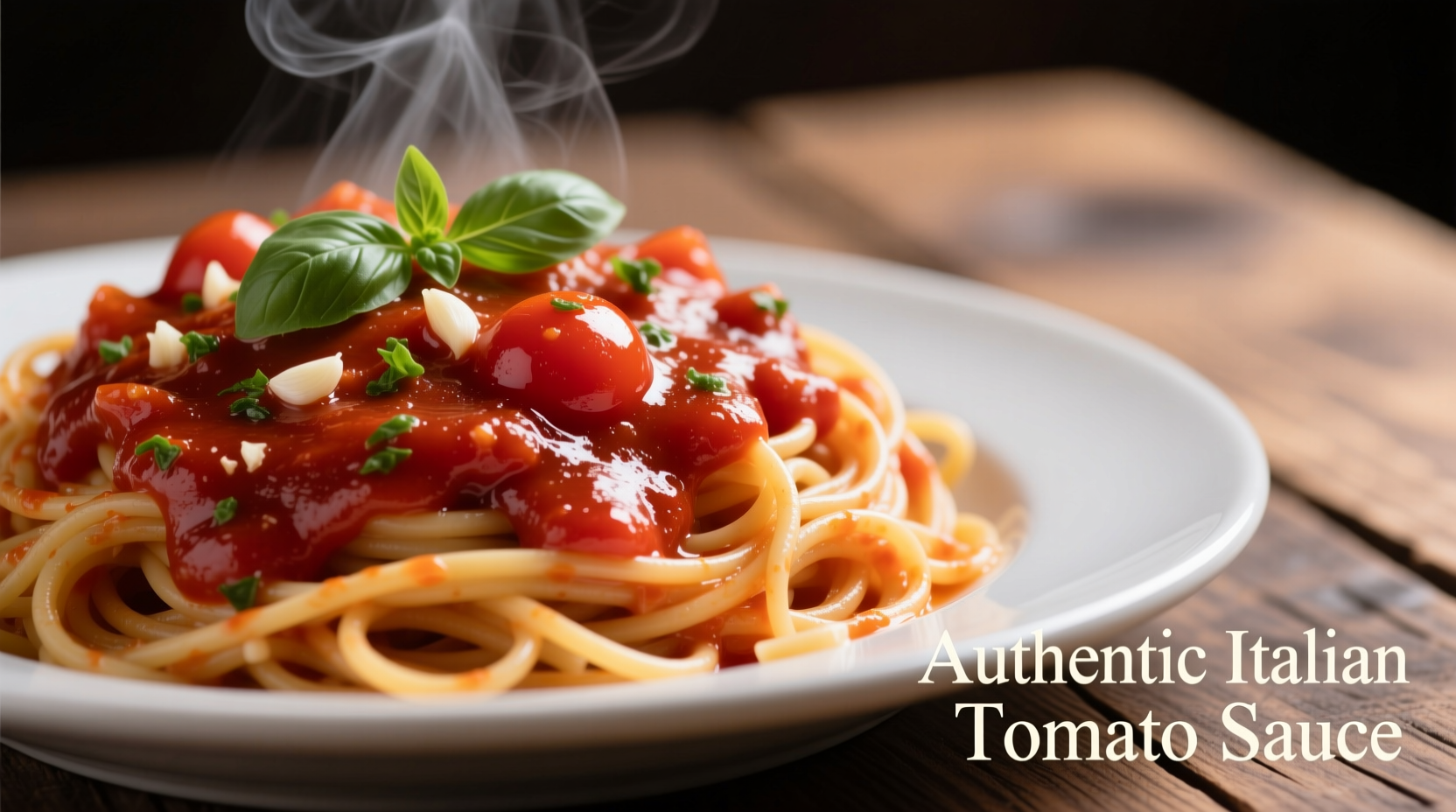Many home cooks mistakenly believe tomato sauce and pasta sauce are interchangeable. While tomato sauce forms the foundation, authentic pasta sauce requires strategic enhancements to achieve the depth and balance found in Italian kitchens. Understanding this distinction is the first step toward restaurant-quality results.
Why Basic Tomato Sauce Isn't Ready for Pasta
Commercial tomato sauce serves as a convenient starting point but lacks the layered complexity of traditional pasta sauce. Most store-bought varieties contain added sugar, citric acid, and preservatives that create a one-dimensional flavor profile. Professional chefs universally agree that transforming tomato sauce requires three critical elements:
- Aromatic foundation - Onions, garlic, and celery properly sautéed in olive oil
- Flavor enhancers - Umami-rich ingredients like tomato paste or Parmesan rind
- Proper seasoning timeline - Adding herbs at specific cooking stages
| Characteristic | Basic Tomato Sauce | Authentic Pasta Sauce |
|---|---|---|
| Flavor Profile | One-dimensional, acidic | Layered, balanced acidity |
| Texture | Uniform, sometimes watery | Rich, slightly thickened |
| Herb Integration | Added during processing | Added at specific cooking stages |
| Umami Content | Low | High (from slow cooking) |
The Professional Transformation Process
Follow this chef-approved method to elevate basic tomato sauce into authentic pasta sauce. This technique works whether you're using store-bought tomato sauce or homemade tomato puree.
Essential Ingredients Beyond Tomato Sauce
For one standard 24-ounce jar of tomato sauce, you'll need:
- 2 tablespoons extra-virgin olive oil
- 1 small yellow onion, finely diced
- 3 garlic cloves, minced
- 2 tablespoons tomato paste
- 1 teaspoon dried oregano (or 1 tablespoon fresh)
- 1 bay leaf
- 1/4 cup red wine (optional but recommended)
- 1 Parmesan cheese rind (if available)
- Fresh basil leaves for finishing

Step-by-Step Transformation
- Sauté aromatics: Heat olive oil over medium heat. Add onions and cook until translucent (5-7 minutes). Add garlic and cook 1 minute until fragrant.
- Build flavor foundation: Stir in tomato paste and cook 2-3 minutes until it darkens slightly. This caramelization creates depth.
- Deglaze: Pour in red wine, scraping up any browned bits from the pan bottom. Simmer until liquid reduces by half.
- Add tomato sauce: Pour in tomato sauce, bay leaf, oregano, and Parmesan rind. Do not add salt yet.
- Simmer strategically: Cook uncovered for 20-25 minutes, stirring occasionally. The sauce should reduce by about 25%.
- Final seasoning: Remove bay leaf and Parmesan rind. Stir in fresh basil and season with salt to taste.
Flavor Enhancement Secrets from Italian Kitchens
Professional chefs employ these subtle techniques to create restaurant-quality pasta sauce from basic tomato sauce:
- Acidity balancing: If your sauce tastes too acidic, add a pinch of baking soda (1/8 teaspoon) rather than sugar. This neutralizes pH without adding sweetness.
- Umami boosters: A Parmesan rind simmered in the sauce adds complex savory notes. Anchovy paste (1/2 teaspoon) dissolves completely while enhancing depth.
- Texture refinement: For smoother sauces, blend with an immersion blender. For chunkier textures, add diced tomatoes during the last 10 minutes of cooking.
- Herb timing: Add dried herbs early in cooking but fresh herbs in the last 5 minutes to preserve their bright flavor.
Common Variations for Different Needs
Adapt this base technique for various cooking scenarios and dietary preferences:
Quick Weeknight Version (15 minutes)
When time is limited, skip the wine reduction step and use pre-minced garlic. Add 1/2 teaspoon dried basil along with the oregano, and finish with fresh basil. This method maintains 80% of the flavor complexity in half the time.
Meat Sauce Adaptation
For authentic meat sauce, brown 1/2 pound ground meat (a mix of pork and beef works best) before adding aromatics. Remove excess fat, then proceed with the recipe. The meat should simmer with the sauce for at least 15 minutes to allow flavors to meld.
Vegan Option
Replace the Parmesan rind with 1 teaspoon nutritional yeast and 1/2 teaspoon soy sauce for umami depth. Add a small piece of dried mushroom during simmering for additional complexity.
Troubleshooting Common Sauce Problems
Even with proper technique, issues can arise. Here's how professional chefs fix common problems:
- Too acidic: Add a small pinch of baking soda (1/8 teaspoon at a time) rather than sugar. This neutralizes pH without altering sweetness.
- Too sweet: Balance with a splash of red wine vinegar or lemon juice (1/2 teaspoon at a time).
- Too thin: Simmer uncovered for additional 5-10 minutes, or create a slurry with 1 teaspoon cornstarch and 1 tablespoon water.
- Flavor too flat: Add a small amount of umami booster (Parmesan rind, soy sauce, or anchovy paste) and let simmer 5 more minutes.
Remember that pasta sauce continues to develop flavor as it cools. Always taste and adjust seasoning just before serving, as flavors concentrate during storage.
Storage and Reheating for Maximum Flavor
Proper storage actually improves pasta sauce flavor. Cool sauce to room temperature, then transfer to an airtight container. Refrigerate for up to 5 days or freeze for up to 3 months.
When reheating, do so gently over low heat. High temperatures can cause the sauce to separate and lose its delicate flavor balance. Add a splash of water if the sauce has thickened too much during storage.











 浙公网安备
33010002000092号
浙公网安备
33010002000092号 浙B2-20120091-4
浙B2-20120091-4